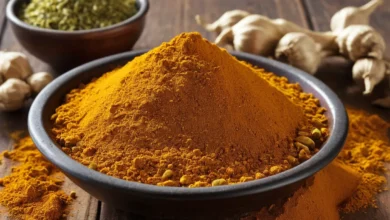Onglet: A Delicious Cut of Beef

Onglet, often referred to as hanger steak, is a flavorful cut of beef that is prized for its rich taste and tender texture. This underappreciated cut is often overlooked in favor of more popular options like ribeye or sirloin, but it offers a unique depth of flavor that can elevate any meal. Whether grilled, pan-seared, or braised, onglet can be a standout dish that delights the palate. Let’s dive into everything you need to know about onglet, including how to cook it perfectly and some delicious recipe ideas.
What Is Onglet?
Onglet is a cut of beef taken from the diaphragm area of the cow. Known for its robust flavor, it is sometimes referred to as the “butcher’s steak” because butchers often kept it for themselves rather than selling it. Onglet is a relatively small cut, typically weighing around 1 to 2 pounds, and has a distinct grain that can make it tricky to cook if you’re not familiar with it. When prepared correctly, however, it can be incredibly tender and flavorful.
Why Choose Onglet?
- Rich Flavor: Onglet is known for its deep, beefy flavor, making it a favorite among meat enthusiasts.
- Affordability: Compared to more common cuts, onglet is often more affordable, providing great value for its taste.
- Versatility: This cut can be used in various recipes, from classic steak dishes to stir-fries, making it adaptable to many cuisines.
- Quick Cooking Time: Onglet cooks relatively quickly, making it a great option for weeknight dinners.
Cooking Onglet: Tips and Techniques
Cooking onglet requires some attention to detail, but with the right techniques, you can achieve a perfect steak every time.
1. Marinate for Flavor:
Marinating onglet can enhance its flavor and tenderness. A simple marinade of olive oil, garlic, herbs, and vinegar works wonders. Let the meat marinate for at least 30 minutes or up to overnight for deeper flavor.
2. Cook at High Heat:
Onglet benefits from high-heat cooking methods like grilling or pan-searing. This helps to develop a nice crust while keeping the inside juicy and tender.
3. Rest the Meat:
After cooking, let the onglet rest for at least 5-10 minutes. This allows the juices to redistribute, ensuring a more flavorful and moist steak.
4. Slice Against the Grain:
To maximize tenderness, always slice onglet against the grain. This shortens the muscle fibers and makes the meat easier to chew.
Delicious Onglet Recipes
Here are a few recipes that showcase the versatility and flavor of onglet:
1. Grilled Onglet with Chimichurri Sauce
Ingredients:
- 1 lb onglet
- 1/4 cup olive oil
- 1/4 cup red wine vinegar
- 1 cup fresh parsley, chopped
- 1/4 cup fresh cilantro, chopped
- 3 cloves garlic, minced
- Salt and pepper to taste
Instructions:
- Marinate the Meat: Combine olive oil, red wine vinegar, salt, and pepper in a bowl. Add the onglet, ensuring it’s well-coated. Marinate for at least 30 minutes.
- Prepare Chimichurri: In a separate bowl, mix parsley, cilantro, garlic, olive oil, vinegar, salt, and pepper. Set aside.
- Grill the Onglet: Preheat the grill to high. Cook the onglet for 3-4 minutes per side for medium-rare.
- Serve: Allow the meat to rest, then slice against the grain and serve with chimichurri sauce drizzled on top.
2. Onglet Stir-Fry with Vegetables
Ingredients:
- 1 lb onglet, thinly sliced
- 2 tablespoons soy sauce
- 1 tablespoon sesame oil
- 1 bell pepper, sliced
- 1 cup broccoli florets
- 2 carrots, julienned
- 2 cloves garlic, minced
- 1 teaspoon ginger, minced
Instructions:
- Marinate the Meat: Combine soy sauce and sesame oil with sliced onglet. Let it marinate for 15 minutes.
- Stir-Fry: Heat a large pan or wok over high heat. Add garlic and ginger, stir-frying for about 30 seconds before adding vegetables. Cook until just tender, then add the onglet.
- Cook Thoroughly: Stir-fry for 3-5 minutes until the meat is cooked through. Serve immediately over rice or noodles.
Frequently Asked Questions
1. Is onglet tough?
When cooked correctly, onglet is not tough. It is essential to marinate it and slice it against the grain to enhance tenderness.
2. How should onglet be cooked?
Onglet is best cooked using high-heat methods like grilling or pan-searing. Aim for medium-rare to medium doneness for optimal flavor and texture.
3. Can I use onglet in recipes that call for other cuts of beef?
Absolutely! Onglet can be used in any recipe that calls for steak. Just remember that it may cook differently than more common cuts.
4. What sides pair well with onglet?
Onglet pairs well with a variety of sides, including roasted vegetables, mashed potatoes, or a fresh salad. For a complete meal, consider adding a grain like quinoa or rice.
5. Where can I buy onglet?
Onglet can often be found at butcher shops or specialty grocery stores. It may also be available at some larger supermarkets in the beef section.
Conclusion
Onglet is a delicious and versatile cut of beef that deserves a place in your cooking repertoire. With its rich flavor and tender texture, it can be the star of any meal, whether grilled, stir-fried, or braised. By following a few simple cooking tips and trying out delicious recipes, you can enjoy this unique cut to its fullest potential. Don’t hesitate to explore the world of onglet and discover how it can elevate your dining experience!





